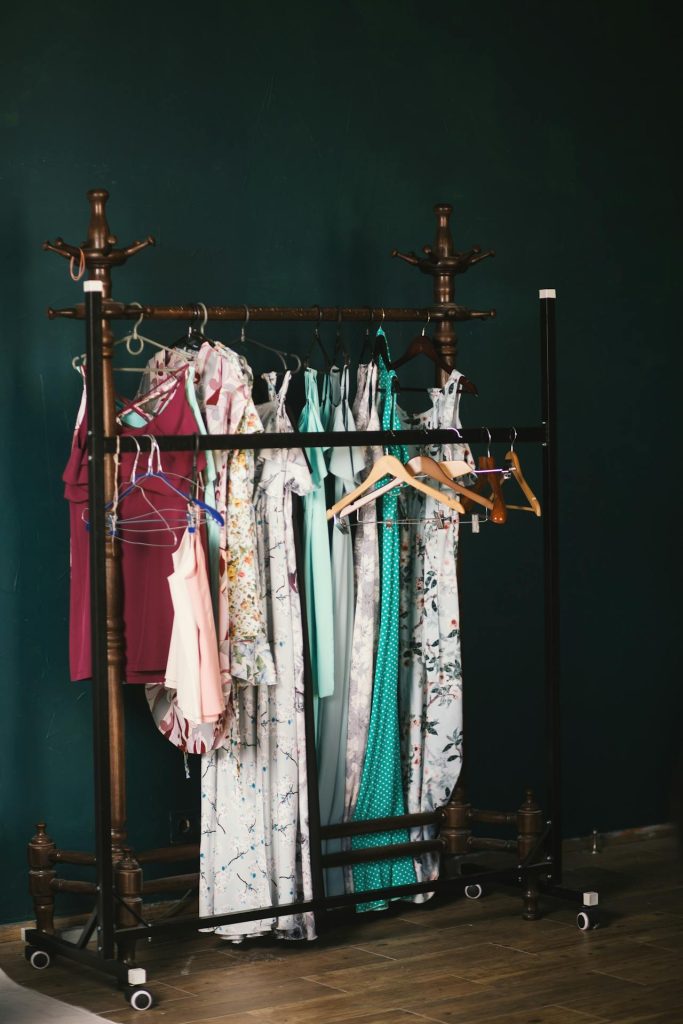In the ever-evolving world of fashion, designers and brands constantly seek new ways to express creativity, tell stories, and make a statement. One of the most versatile and impactful tools in the designer’s arsenal is the use of patches. These eye-catching embellishments have made their way from the utilitarian origins of mending clothing to becoming prominent features in high-fashion collections. Bold patches offer endless possibilities for customization, allowing designers to infuse garments with personality, cultural references, and a touch of rebellious flair.
As the demand for personalized and expressive fashion grows, patches have become a staple in seasonal fashion lines. From luxury brands to streetwear labels, designers are embracing patches as a way to enhance the visual appeal of their collections and connect with a broader audience. In this article, we will explore the significance of patches in fashion, discuss strategies for integrating them into seasonal lines, and examine how they can elevate a brand’s identity and consumer appeal.
The Rise of Bold Patches in Fashion
Before diving into the integration of patches into seasonal fashion lines, it’s important to understand the historical context and evolution of patches in fashion.
1. Historical Context: From Function to Fashion
Patches originally served a practical purpose, primarily used to mend and reinforce clothing. In the early 20th century, military uniforms featured patches to denote rank, unit, and achievements. This utilitarian use of patches eventually transitioned into civilian life, where they became associated with various subcultures, such as punk rock, skateboarding, and motorcycle clubs. For these groups, patches were more than just fabric; they were symbols of identity, rebellion, and belonging.
By the late 20th century, patches began to make their way into mainstream fashion. Designers recognized their potential as a creative medium and started incorporating them into their collections. Patches were no longer just functional; they became a form of self-expression, allowing wearers to customize their clothing and showcase their personality.
2. The Evolution of Bold Patches in High Fashion
As the fashion industry evolved, bold patches became more prominent in high-fashion collections. Luxury brands like Gucci, Dolce & Gabbana, and Marc Jacobs began experimenting with patches, using them to add a playful and artistic touch to their garments. These designers recognized that patches could be more than just accents; they could be the focal point of an outfit.
Bold patches started to appear on everything from denim jackets and jeans to handbags and footwear. Their vibrant colors, intricate designs, and varied textures offered a new way to make a statement. This evolution marked a shift in how patches were perceived in the fashion world—from utilitarian accessories to essential elements of design.
The Role of Bold Patches in Seasonal Fashion Lines
Integrating patches into seasonal fashion lines allows designers to create visually striking collections that resonate with consumers. These patches can be used to convey a brand’s identity, tell a story, or simply add a unique twist to classic pieces.
1. Enhancing Brand Identity
One of the primary reasons designers incorporate bold patches into their collections is to enhance brand identity. Patches offer a versatile medium through which brands can communicate their values, aesthetics, and messages.
Examples of Brand Identity Enhancement:
- Logo and Branding Patches: Many brands use patches featuring their logos or iconic symbols as a way to reinforce brand identity. For example, a luxury brand might incorporate a bold patch of its logo on a denim jacket, making it instantly recognizable. This not only strengthens brand visibility but also adds a touch of exclusivity to the garment.
- Thematic Collections: Patches can be used to tie together the theme of a seasonal collection. For instance, a spring collection inspired by nature might feature patches with floral motifs, birds, and insects. These patches serve as visual cues that reinforce the collection’s theme and create a cohesive narrative.
- Cultural References: Brands can use patches to pay homage to cultural references that align with their identity. For example, a brand that draws inspiration from 1960s pop art might incorporate patches featuring bold, colorful designs reminiscent of that era. These cultural nods help the brand connect with consumers who share similar interests and values.
By using bold patches strategically, designers can create a strong brand presence and make their collections instantly recognizable.
2. Telling a Story Through Design
Fashion is a form of storytelling, and patches provide an excellent medium for designers to convey narratives through their collections. Whether it’s a story of heritage, adventure, or social commentary, patches can bring a designer’s vision to life.
Storytelling Through Patches:
- Heritage and Tradition: Patches can be used to celebrate a brand’s heritage or cultural roots. For example, a fashion house with a long history might incorporate patches featuring vintage designs, family crests, or historical references. These patches not only add a layer of meaning to the garments but also connect the present with the brand’s storied past.
- Adventure and Exploration: For collections inspired by travel and exploration, patches can depict maps, landmarks, or symbols of different cultures. A jacket adorned with patches of world maps, compass roses, and exotic animals, for example, can evoke a sense of wanderlust and adventure.
- Social and Political Commentary: Fashion has always been a platform for social and political expression, and bold patches can serve as a medium for making statements. Designers can use patches to address issues such as climate change, equality, or peace. These patches not only make a visual impact but also provoke thought and discussion among consumers.
By telling stories through bold patches, designers can create collections that resonate emotionally with their audience and leave a lasting impression.
3. Adding Visual Interest and Texture
Bold patches are an effective way to add visual interest and texture to garments. They can transform simple clothing items into standout pieces, making them more appealing to consumers.
Adding Visual Interest and Texture:
- Layering and Dimension: Patches can be layered or combined with other materials to create a sense of depth and dimension. For example, a jacket might feature a large embroidered patch with a 3D effect, making it pop against the fabric. Layering patches of different sizes and textures can also create a dynamic, eye-catching look.
- Contrasting Textures: Mixing different textures—such as velvet, leather, and denim—can create a tactile experience for the wearer. Bold patches made from materials like sequins, metallic threads, or beaded appliqués add a touch of luxury and sophistication to the garment.
- Playful Patterns and Colors: Patches offer an opportunity to experiment with bold patterns and colors that might be too overwhelming for an entire garment. For example, a patch featuring a bright, geometric pattern can add a pop of color to an otherwise neutral outfit. This approach allows designers to incorporate bold elements without overpowering the overall look.
By using bold patches to add visual interest and texture, designers can create garments that stand out on the runway and in the marketplace.
Strategies for Integrating Bold Patches into Seasonal Collections
Successfully integrating bold patches into seasonal fashion lines requires careful planning and creative execution. Here are some strategies designers can use to make the most of this versatile design element.
1. Start with a Clear Vision
Before incorporating bold patches into a collection, it’s important to have a clear vision of how they will contribute to the overall theme and aesthetic. Consider the following questions:
- What is the theme or inspiration for the collection?
- How do the patches align with the brand’s identity and values?
- What message or story do the patches convey?
Having a clear vision ensures that the patches are not just an afterthought but an integral part of the design process. This approach helps create a cohesive collection where each piece contributes to the overall narrative.
2. Choose the Right Placement
The placement of bold patches is crucial to their impact. Strategic placement can draw attention to certain areas of the garment and enhance its overall design.
Placement Considerations:
- Focal Points: Place patches in areas that naturally draw the eye, such as the chest, back, or sleeves. For example, a large patch on the back of a denim jacket can serve as the focal point of the entire outfit.
- Symmetry and Balance: Consider the balance and symmetry of the garment when placing patches. For example, placing identical patches on each sleeve or shoulder creates a sense of balance, while asymmetrical placement can add a touch of edginess.
- Subtle Accents: Not all patches need to be bold and in-your-face. Smaller patches can be used as subtle accents on pockets, collars, or hems. These details can add a touch of personality to the garment without overwhelming the design.
By carefully considering placement, designers can maximize the impact of bold patches and create visually appealing garments.
3. Experiment with Different Patch Styles
Bold patches come in a variety of styles, each offering a different aesthetic and effect. Experimenting with different types of patches can add diversity and depth to a collection.
Patch Styles to Consider:
- Embroidered Patches: Embroidered patches are a classic choice, offering a textured and detailed look. They can be made in a wide range of colors and designs, making them versatile for various themes.
- Chenille Patches: Chenille patches have a soft, fuzzy texture that adds a tactile element to the garment. Often used in varsity jackets, these patches are perfect for creating a retro or athletic vibe.
- Appliqué Patches: Appliqué patches are sewn onto the fabric, often using contrasting materials like leather, velvet, or sequins. These patches add dimension and a luxurious feel to the garment.
- Printed Patches: Printed patches allow for intricate designs and photo-realistic images. They are ideal for detailed artwork or patterns that require precise replication.
By experimenting with different patch styles, designers can create a diverse and visually interesting collection that appeals to a wide range of consumers.
4. Consider Customization and Personalization
Customization and personalization are key trends in fashion, and bold patches offer an excellent opportunity to cater to this demand. Allowing consumers to customize their garments with patches can enhance their connection to the brand and create a more personalized shopping experience.
Customization Strategies:
- Mix-and-Match Patches: Offer a selection of bold patches that consumers can mix and match to create their own unique look. This could be done through an online customization tool or in-store experience, where consumers can choose from a variety of patch designs and placements.
- Limited-Edition Patches: Create limited-edition patches that are only available for a specific season or collection. These exclusive patches can be used to incentivize purchases and create a sense of urgency among consumers.
- Monogrammed Patches: Offer monogrammed patches that allow consumers to add their initials or name to the garment. This personal touch adds a sense of ownership and exclusivity to the piece.
By incorporating customization options into their collections, designers can create a more engaging and interactive experience for consumers, leading to increased brand loyalty and sales.
5. Collaborate with Artists and Designers
Collaborating with artists and designers can bring fresh perspectives and creativity to the use of bold patches in fashion. These collaborations can result in unique, one-of-a-kind pieces that stand out in the market.
Collaboration Ideas:
- Artist-Designed Patches: Partner with visual artists, illustrators, or graphic designers to create bold patches that feature their artwork. These collaborations can bring a new level of artistry to the collection and attract fans of the artist.
- Designer Collaborations: Collaborate with other fashion designers or brands to create patches that reflect both entities’ aesthetics. For example, a luxury brand might collaborate with a streetwear label to create a patch that blends high fashion with urban culture.
- Community Involvement: Engage the community by hosting a patch design contest, where consumers can submit their designs. The winning designs can be produced as part of the collection, creating a sense of community involvement and brand connection.
Collaborating with artists and designers not only adds creativity and uniqueness to the collection but also expands the brand’s reach to new audiences.
The Impact of Bold Patches on Consumer Appeal
Integrating bold patches into seasonal fashion lines can have a significant impact on consumer appeal, driving interest, sales, and brand loyalty.
1. Creating a Standout Product
In a competitive market, bold patches can make a product stand out. Consumers are drawn to unique and visually striking pieces, and patches offer an easy way to differentiate a garment from others on the rack.
Standout Factors:
- Visual Impact: Bold patches add color, texture, and dimension to clothing, making it more visually appealing. Consumers are more likely to notice and be drawn to garments with striking patch designs.
- Uniqueness: Patches offer endless possibilities for customization, meaning no two garments need to be exactly alike. This uniqueness appeals to consumers who want to express their individuality through fashion.
- Storytelling: Patches that tell a story or convey a message can resonate with consumers on a deeper level. Whether it’s a patch that represents a cause they care about or a design that speaks to their personal style, these elements create a connection between the consumer and the product.
By creating standout products with bold patches, designers can capture the attention of consumers and drive sales.
2. Driving Consumer Engagement
Bold patches offer opportunities for consumer engagement, both in-store and online. By creating interactive and customizable experiences, brands can build stronger connections with their audience.
Engagement Strategies:
- Interactive In-Store Displays: Create in-store displays where consumers can interact with patches, such as a customization station where they can design their own garments. This hands-on experience can enhance the shopping experience and encourage purchases.
- Social Media Campaigns: Use social media to showcase bold patches and encourage consumers to share how they’ve incorporated patches into their own style. This user-generated content can help build a community around the brand and drive engagement.
- Limited-Time Offers: Offer limited-time promotions or exclusive patches that are only available for a short period. These offers create a sense of urgency and can drive consumers to make a purchase.
By driving consumer engagement through bold patches, brands can build a loyal customer base and create buzz around their collections.
3. Fostering Brand Loyalty
Bold patches can play a key role in fostering brand loyalty. When consumers feel a connection to a brand—whether through customization, storytelling, or cultural references—they are more likely to become repeat customers.
Loyalty-Building Strategies:
- Exclusive Patches for Loyal Customers: Reward loyal customers with exclusive patches that are not available for purchase. These patches can be sent as gifts or included with certain purchases, making customers feel valued and appreciated.
- Collectible Patches: Create a series of collectible patches that consumers can collect over time. This strategy encourages repeat purchases and builds a sense of anticipation for future releases.
- Community Building: Use bold patches to build a sense of community among consumers. For example, create patches that represent different membership tiers or events, allowing consumers to showcase their connection to the brand.
By fostering brand loyalty through bold patches, designers can create a dedicated customer base that continues to support the brand season after season.
Bold Patches as a Cornerstone of Seasonal Fashion Lines
Bold patches have transcended their utilitarian origins to become a cornerstone of modern fashion. Their ability to enhance brand identity, tell stories, add visual interest, and drive consumer engagement makes them an invaluable tool for designers. By strategically integrating bold patches into seasonal fashion lines, brands can create collections that are visually striking, emotionally resonant, and highly appealing to consumers.
As fashion continues to evolve, bold patches will remain a powerful medium for creativity and self-expression. Whether through customization, collaboration, or storytelling, these patches offer endless possibilities for designers to push the boundaries of fashion and connect with their audience in meaningful ways.
If you are interested in purchasing high-quality custom patches, feel free to call us at 1-866-903-4903 or fill out one of our FREE quotes here.




